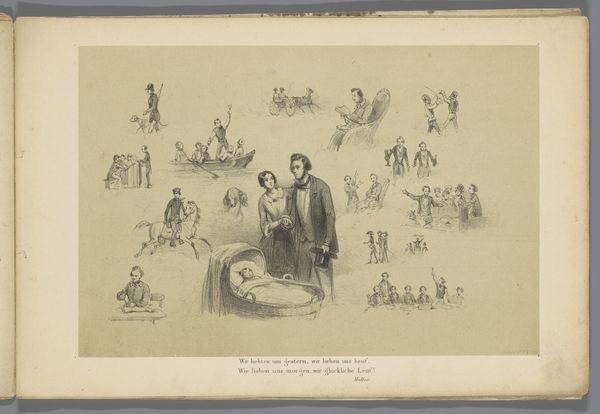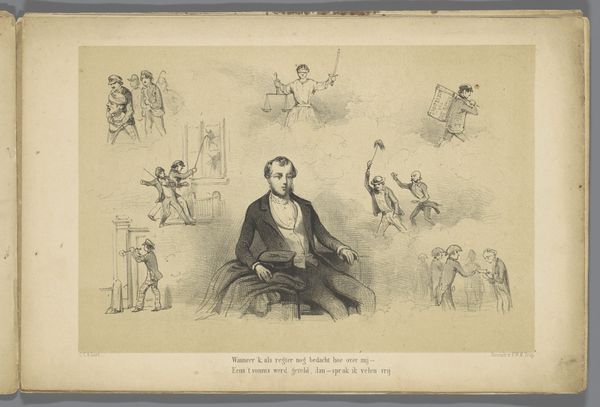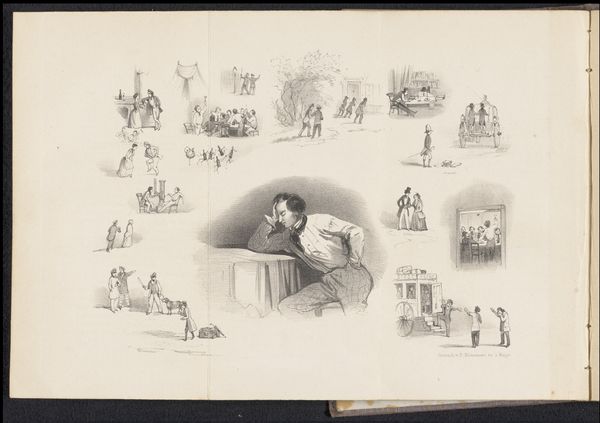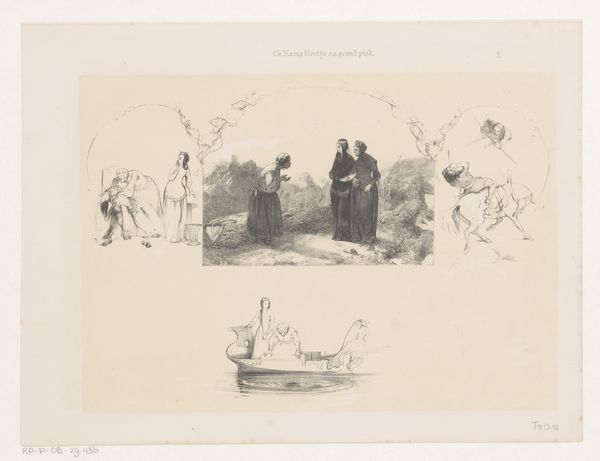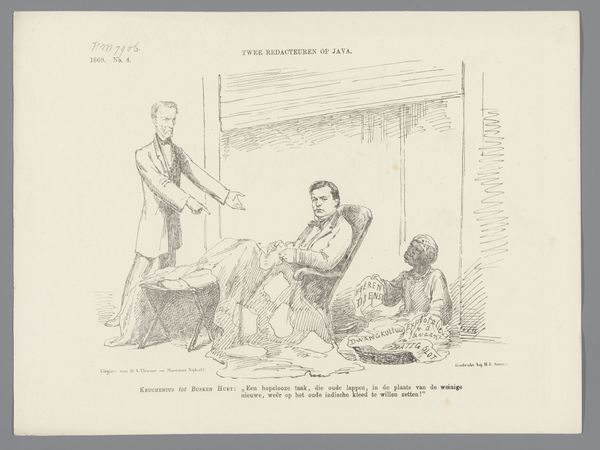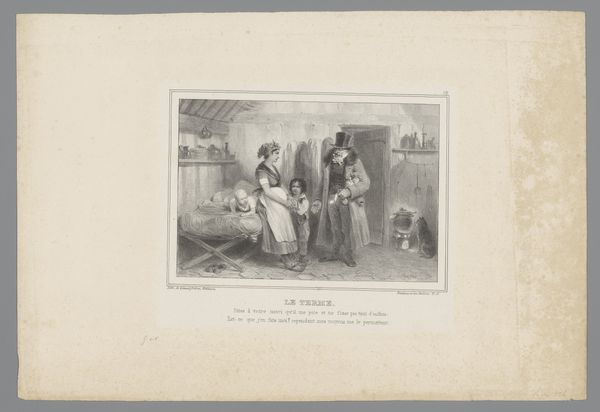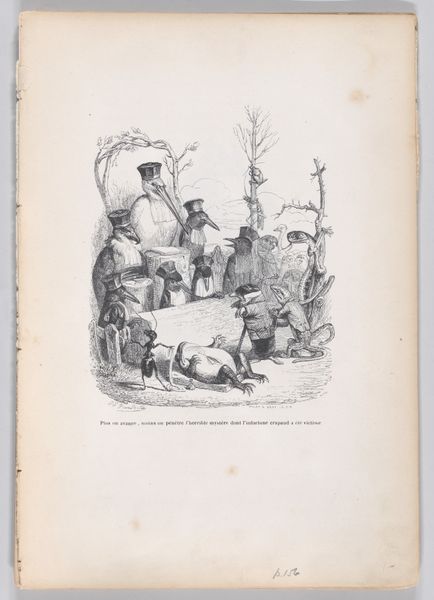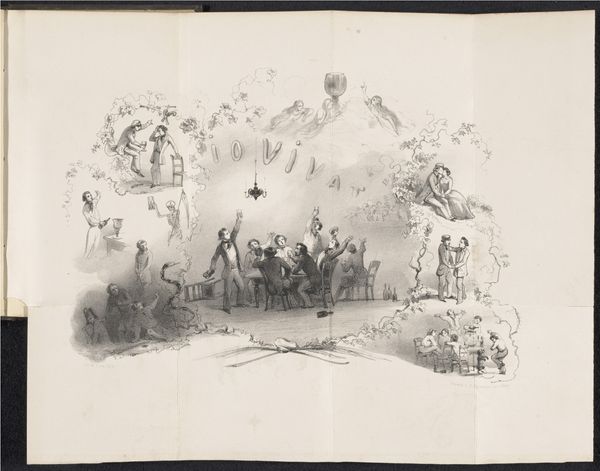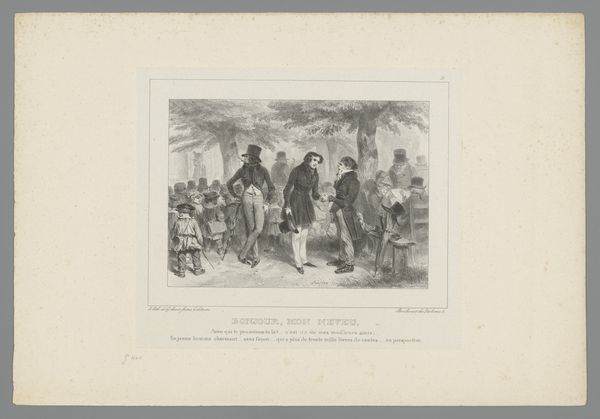
drawing, paper, ink, pen
#
drawing
#
dutch-golden-age
#
landscape
#
paper
#
ink
#
pen
#
genre-painting
Dimensions: height 190 mm, width 290 mm
Copyright: Rijks Museum: Open Domain
Curator: Carel Christiaan Antony Last is the artist behind this intriguing drawing titled, "Soldaat in Nederlands-Indië", placing it somewhere between 1836 and 1876. You'll find it rendered in pen and ink on paper. Editor: It gives off a somber yet farcical feel. The detailed central figure is this solemn-looking soldier, amidst seemingly disconnected vignettes that give this composition a chaotic yet dreamlike mood. Curator: That tension, I think, stems from its complex relationship to Dutch colonialism. It offers visual fragments related to service, and leisure during a period of significant Dutch presence in what is now Indonesia, known then as the Dutch East Indies. The Rijksmuseum holds this piece; thus, we need to interrogate its presence in such an institution. Editor: Absolutely, and considering the power dynamics inherent in colonial contexts, the drawing can be seen as perpetuating an idealized or romanticized vision of colonial life. Those casual leisure scenes likely mask the harsh realities of exploitation and oppression endured by the colonized. The "genre painting" aspect of the work risks neutralizing and domesticating this very history. Curator: One could argue Last’s choices mirror the era’s social and political currents, possibly catering to a European audience largely unaware or unconcerned with the lived experiences of the colonized people. This artwork offers more of a glimpse into Dutch sensibilities. Editor: Indeed, it's hard to ignore how the idyllic landscapes and nonchalant figures serve to obscure the violence that allowed that very reality to exist. It reminds me of the art critic Kobena Mercer, and his take on art which invites discussions around representation, power and history. Curator: And considering that it’s on paper, as a drawing, implies an intimacy. Someone possessed and preserved this personal vision. I see in this artwork how art both reflects and shapes the perceptions of its time. Editor: For me, viewing Last's piece through a contemporary lens offers a potent reminder of how deeply ingrained colonial attitudes can be. By acknowledging that difficult heritage, we can forge a more responsible future that centers voices silenced for centuries.
Comments
No comments
Be the first to comment and join the conversation on the ultimate creative platform.
